The Apple iPhone 6s and iPhone 6s Plus Review
by Ryan Smith & Joshua Ho on November 2, 2015 8:00 AM EST- Posted in
- Smartphones
- Apple
- Mobile
- SoCs
- iPhone 6s
- iPhone 6s Plus
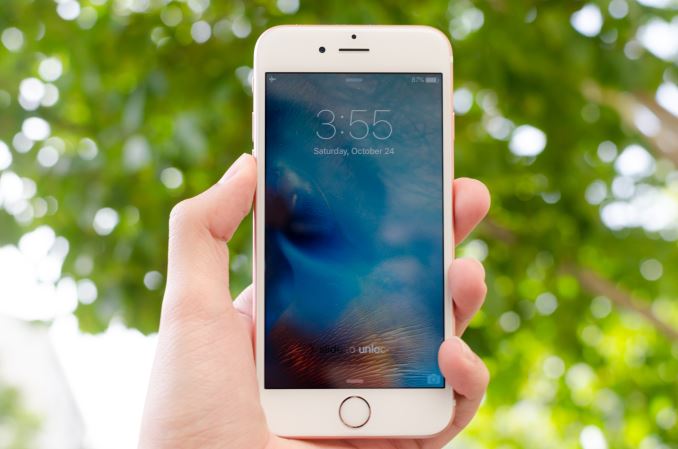
To be perfectly honest, this past year has been remarkably boring in the mobile segment. For whatever reason, phones have either stood still or regressed when it comes to overall quality. There are a few stand-outs that have been worth talking about like the Galaxy S6 lineup and the Galaxy Note5 lineup, but for the most part every phone I’ve reviewed this year has been disappointing in some way. I carry an iPhone 6 to make sure I stay current on changes in iOS, but my primary phone continues to be an HTC One M7. I was hoping to get a new Android phone this year, but so far nothing has really piqued my interest.
Part of the problem this year is that performance and battery life haven't been the most impressive in a lot of cases. By this point, it's really not a surprise that Snapdragon 810 doesn't deliver as much performance as it needs to for the amount of power that it draws. However, even independent of SoC it seems a lot of OEMs haven't really pushed the bar in design or attention to detail. Some phones have cameras with almost unacceptable post-processing quality, others continue to have poorly calibrated displays, and the ones that have none of those have problems with software experience or something else. In general, no Android phone I've seen this year really delivers everything that I'd want in a single package. There are phones that are clearly better than others, but nothing that rises to the level that I'd want before putting down a few hundred dollars.
In light of this lack of competition in the market, it's arguable that Apple is facing less competition than before. The iPhone 6s would continue to sell quite strongly even if this year's refresh was relatively minor as they would still end up quite strong competitively as they would be able to capitalize on momentum from previous years. If you were unfamiliar with the iPhone 6s and Apple's iPhone launch cycle, at first you might be convinced that Apple has done exactly that. However, in general the iPhone release cycle is such that industrial design is constant for two years at a time, so every other year sees a design refresh. When the design isn't refreshed, the phone often carries significant internal changes. In the past, the iPhone 3GS brought a better SoC, a faster modem, and a better camera. The iPhone 4S brought a new SoC, camera, and Siri. The iPhone 5s brought a new SoC, camera, and TouchID. In general, we can see a pretty clear pattern of evolution but it seems that with the 5s the refresh launches have generally brought new features as it has become insufficient to simply ship a faster SoC and possibly a modem and camera refresh to justify a new smartphone.
In the interest of diving into these changes at a high level, we can start with our usual spec table, which can give an idea for whether there's anything immediately worth talking about.
| Apple iPhone 6s and 6s Plus | ||||
| Apple iPhone 6 | Apple iPhone 6 Plus | Apple iPhone 6s | Apple iPhone 6s Plus | |
| SoC | Apple A8 2 x 1.3GHz Apple Typhoon |
Apple A9 2 x 1.85GHz Apple Twister |
||
| GPU | PowerVR GX6450 | PowerVR GT7600 | ||
| RAM | 1GB LPDDR3 | 2GB LPDDR4 | ||
| Display | 4.7-inch 1334 x 750 IPS LCD | 5.5-inch 1920 x 1080 IPS LCD | 4.7-inch 1334 x 750 IPS LCD | 5.5-inch 1920 x 1080 IPS LCD |
| Size / Mass | 138.1 x 67 x 6.9 mm, 129 grams | 158.1 x 77.8 x 7.1 mm, 172 grams | 138.3 x 67.1 x 7.1 mm, 143 grams | 158.2 x 77.9 x 7.3mm, 192 grams |
| Camera | Rear Facing 8MP iSight with 1.5µm pixels + True Tone Flash Front Facing 1.2MP F/2.2 |
Rear Facing 8MP iSight with 1.5µm pixels + True Tone Flash + OIS Front Facing 1.2MP F/2.2 |
Rear Facing 12MP iSight with 1.22µm pixels + True Tone Flash Front Facing 5MP F/2.2 + Retina Flash |
Rear Facing 12MP iSight with 1.22µm pixels + True Tone Flash + OIS Front Facing 5MP F/2.2 + Retina Flash |
| Storage | 16GB/64GB/128GB | |||
| I/O | Apple Lightning connector, 3.5mm headset | |||
| WiFi | 2.4/5GHz 1x1 802.11a/b/g/n/ac, BT 4.2, NFC | 2.4/5GHz 2x2 802.11a/b/g/n/ac, BT 4.2, NFC | ||
| Price | $549 (16GB) | $649 (16GB) | $649/749/849 16/64/128GB | $749/849/949 16/64/128GB |
At a high level, there are already a number of changes that we can talk about. The SoC is new and improved for this year with improved performance and power. The rear camera now supports 4K video recording and has higher resolution photos than what we’ve seen before. The front-facing camera is now higher resolution as well. The iPhone 6s finally has 2 GB of RAM, with improved power and bandwidth along with improved multi-tasking that comes from additional RAM. The modem now uses less power and also capable of higher throughput, as is the WiFi chipset.
Outside of these spec sheet changes, Apple has implemented a number of new features. One of the major highlights is 3D Touch, in which the display is force-sensitive and allows for new user interface actions based upon the amount of pressure applied to a point on the display. The front-facing camera now uses the display as an LED flash of sorts in low light, which measures ambient light in order to determine what white balance to use along with a backlight driver that temporarily spikes brightness to up to three times the normal maximum brightness for effective lighting. Both cameras now have Live Photos, which records a 1.5 second segment of video before and after the photo taken to capture a moment rather than an instant without the complication that comes with videos.
Design
Of course, before we can get into all of these changes we can start by focusing on the most immediate change, which is the design. For those that are unfamiliar with Apple’s iPhone launch cycle, the S launch cycle usually retains the same industrial design as the previous iPhone. As a result, the changes here are rather scarce. Those interested in a detailed description of the design should refer back to the iPhone 6 review.
However, there have been changes to the look and feel of the iPhone 6s lineup. The first, and most immediate change is the addition of a new color that Apple calls Rose Gold. This is much redder in tone than what we saw with the Apple Watch Edition, to the extent that it looks more like a light pink with a gold tinge rather than gold with a light pink tinge. I’m probably the last person in the world to consult on what color looks best, but I don’t really see anything wrong with this color.
Outside of color, the iPhone 6s lineup has changed in a noticeable way when it comes to materials and in-hand feel. The aluminum back cover is now 7000-series, which increases rigidity with the addition of zinc which increases yield strength, or the pressure needed to permanently deform the material. It’s likely that relative to the iPhone 6, ultimate tensile strength has also increased, although given that tensile strength is a test of how well the metal avoids breaking apart it’s unlikely that this property matters all that much. If you're actually reaching the ultimate tensile strength of a phone's back cover, you've probably already broken everything else in the phone.
With the use of this new aluminum back cover, the phone should be less susceptible to bending under extreme forces. I never had a problem with this when testing the iPhone 6 last year, but it shouldn’t be a problem now. Oddly enough, I did notice that the iPhone 6s is easier to grip than the iPhone 6, but the difference isn’t big enough that I would avoid using a case.
The other change is a new type of cover glass on the display, which uses a dual ion exchange process to make it tougher. According to Apple, this glass is the most durable of any in a smartphone today. A simple search with Google gives reason to suggest that Corning is making this glass as Corning holds a patent for this process. While we have no idea what Apple’s process is, the same dual ion exchange process occurs, which creates two distinct stressed layers that improves impact strength relative to a standard single ion exchange that is seen in Gorilla Glass.
Other than this, the design of the iPhone 6s remains quite good. The rounded edges and slightly curved glass help with in-hand comfort and things like the placement of the 3.5mm headphone jack on the bottom is a smart idea as the headphone jack is easily accessible when the phone is inside a pocket. We can talk about how the camera hump means that the phone doesn't rest completely flat on a table, but given that the phone has gotten about 15 grams heavier in both the iPhone 6s and 6s Plus I suspect it makes sense for Apple to avoid making the phone any thicker with extra battery than they have now. I would rather see thinner lines to insulate antennas here, but I suspect that there is some RF requirement that makes it difficult for this to happen.
Compared to something like the HTC One M9 which also has an aluminum unibody design Apple is far ahead in terms of overall ergonomics and cohesiveness. Relative to the Samsung Galaxy S6 I think the iPhone 6s is noticeably more comfortable due to the more rounded edges, but the iPhone 6s Plus and Galaxy Note 5 are pretty close in overall ergonomics. I do wish Apple would go to a front-ported speaker for the iPhone, but it seems that this is unlikely to happen due to the home button and bezel constraints.


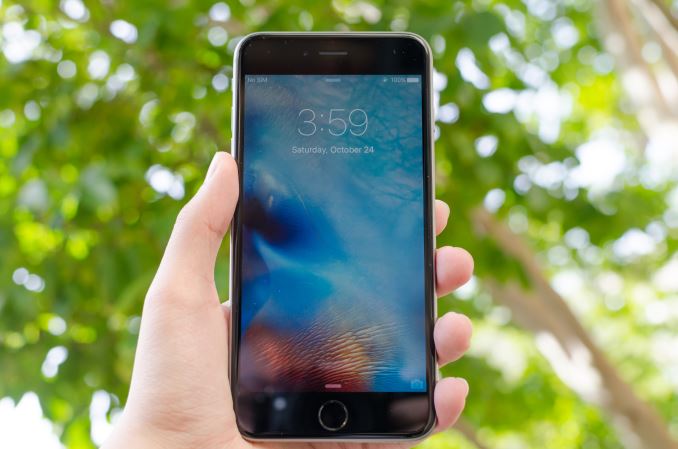
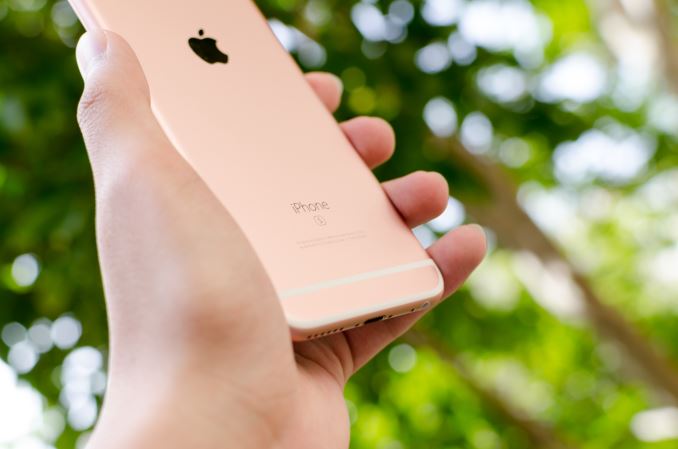
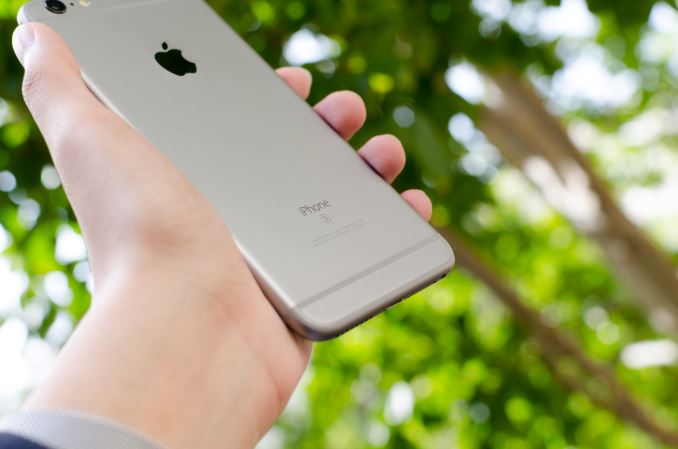
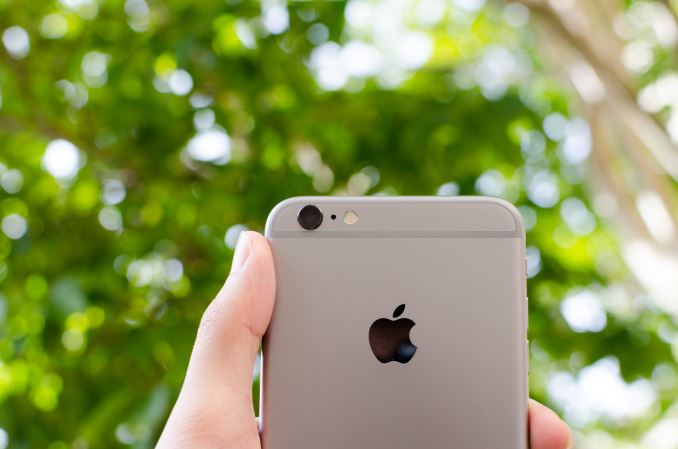
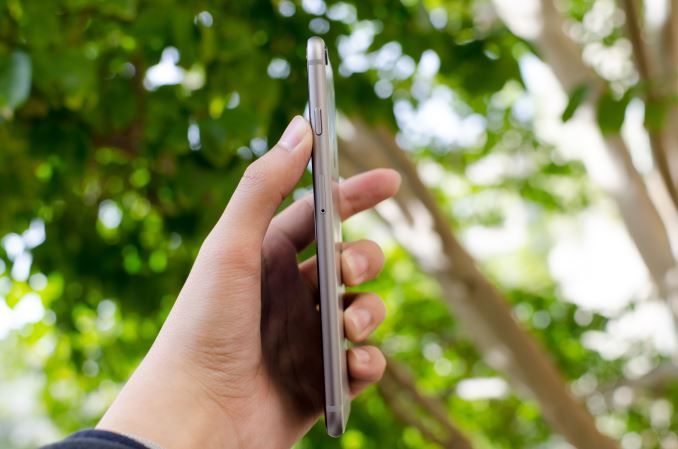
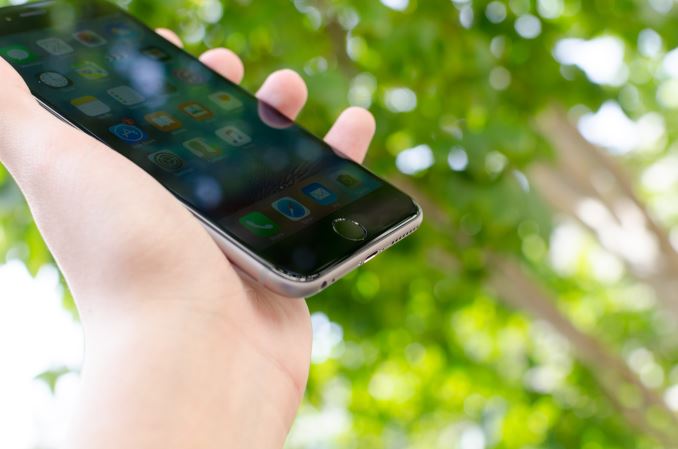
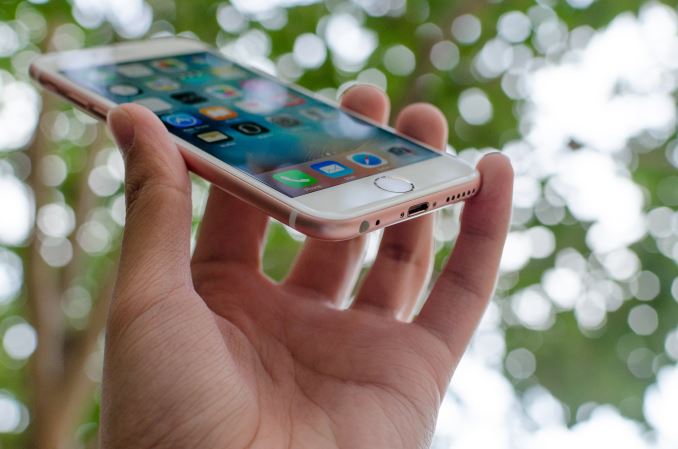








531 Comments
View All Comments
flyingfiddle - Wednesday, November 4, 2015 - link
Truly amazed and convinced that Apple has the best SoC of any phones, and their investment on the SoC paid off. So does their investment on refined iOS experience. I am Android guy but I have to admit I really wish SoC on Android could catch up one day, sooner the better.On the other hand, just because Apple is great in some areas does not mean they should get away with other things that's not as great. The raw power of a high end phone has become more than sufficient for many general users, such that making it more powerful is starting to generate diminished return. I could think of many things that I wish iPhone has, such as longer battery life (i know it's great, relatively, but why not push the boundary?), better screen/body ratio, external memory, more setting and better UI in the camera app, etc.
Well, still not my cup of tea but truly wish Android SoC could catch up one day. That's assuming Android platform survive that long (they have the largest market share but really don't make much money). I hope my money helps supporting them a bit longer..
tytung - Wednesday, November 4, 2015 - link
Can anyone comment on the iPhone 6s Plus frame rate dropping issue ? Animations looks choppy and the frame rate looks like only about 30 fps, unlike 60 fps on the 6s. If the GPU on the phone is so powerful this should not be an issue. In fact, for a phone this expensive UI frame rate drop is really a shameful problem.polmes - Thursday, November 5, 2015 - link
Got tired of iOS and moved to Android (Galaxy S6) earlier this year, but Apple definitely deserves an applause for being basically the only one to keep innovating in the mobile space. kudosSocius - Thursday, November 5, 2015 - link
Hmmmm...any idea why your iPhone 6s Plus scored just 15800 in Google octane when mine scored over 18,000? That's a pretty big discrepancy at 15%. Does your phone have a Samsung CPU? Mine is TSMC.zeeBomb - Thursday, November 5, 2015 - link
Both units are TSMC.Socius - Thursday, November 5, 2015 - link
Then there's something off as there is no way the 6s plus should be scoring just 15,800 on octane.mortimerr - Thursday, November 5, 2015 - link
I've never actually owned an Apple product in my life. All the way back to the original iPod classic. But I will probably finally be changing my stupid principle of 'No Apple Products'.The Android landscape recently has been going back instead of forward. Android 5-6 showcase minor improvements over 4.4.4 (Personally I also prefer Halo. Marshmallow and Lollipop looks slightly cartoony), battery life isn't that much of a leap (a lot of devices are experiencing the mobile radio active bug), and due to the fact that the high end market in the East is so saturated, most OEMs are cutting costs and putting out mid tier phones that lack top end hardware.
A lot of recent releases for Android have a great price point but either have a terrible camera (sensor, pixel size, post processing etc) or the IPS display leaves something to be desired, or it's this or it's that. The only OEM pushing the platform forward is Samsung. But, to be quite frank, I find those devices ugly to look at in every way from the bezel, UI skin, back, front, etc.
Where as Apple continues to simply improve with every iteration. Dual source fab at 14nm! What? 3D touch, increasing the ppi, maintaining solid battery life, great low light camera performance. Offering a big size and a small size with the same internals.
Sony also did this but I don't see the 810 as a very good chip going forward. Especially when it's already pretty far behind in performance to the Exynos and A#. I'll look forward to see if Sony updates the Z line.
I want to wait for Q2'16 for when devices with the 820 start being released, but what's the point when every device will inevitably have some drawback or large flaw or straight up just not be released in N. America.
JTRCK - Friday, November 6, 2015 - link
Where do you want phones to go? There's not much else they can do. A phone being imperfect is "always" the case. There is always something lacking in all these devices, including the iPhone 6S and 6S Plus. One of the first mentions in this review is that the author is still using an HTC One M7 from years ago. Because quite honestly, that was the pinnacle of smartphone design plus an excellent combination of fluid software, excellent performance, and an excellent night performance for a camera (though everything else about that camera was a downgrade). That 3 year old phone is still a very good performer today.Increasing processor/RAM/Storage speed is all excellent and it's expected, but the benefits from such increases are hardly felt by the user on day to day usage. Especially if the software is done properly. Example: I have an old iPhone 4s at home that I use for music streaming that consistently beat out my previous note 4 on application opening, multitasking, sound output quality, web surfing speed, etc. Which phone is superior? Which phone is better? Did AnandTech give that iPhone 4s the BEST award? In my view Apple has always been the king of software and hardware performance. They can get a device with 512mb of ram to outperform a Note 4 with a multicore processor and with 3GB of ram. They should always get the BEST award. But is the BEST (100%) really worth $1,200.00 when the second BEST (99%) is half the price?
I'm not talking about Samsung here. Their phones are expensive with crappy performance. I'm talking about the Moto X Pure, HTC One M9/10, Nexus 6P, etc. I used an iPhone 6S Plus for 2 weeks (and an iPhone 6 Plus for 4 months before that) and returned it for the Nexus 6P. I find the 6P to be a much better phone than the iPhone 6S plus in almost every aspect. It charges faster, it opens applications just as fast, I can multitask faster with the 6P with a side launcher without ever having to see a home screen. I can transition within an app at a faster pace due to dedicated back buttons. A simple thing as not having a "button" to go back a task annoyed me to no end with the iPhone. Not to mention all the limitations of iOS. The only benefit of iPhone for me were the integrations with my Macbook, but other than that. I disliked both iPhones.
The iPhone has all this amazing technology at its core, but my grandmother would never know when using her new 6S. And that's how it should be. I'm more amazed that a Nexus 6P costs half what an iPhone costs while still managing to do just as much, if not more. I honestly found nothing revolutionary about the 6S Plus while using it. In fact, I found it to be quite similar to the 6 Plus. Which I found to be quite similar to the iPhone 4s. Just much larger. And in terms of OS performance, vanilla android at this point is quite simply just as visually pleasing, power efficient, responsive and performant as iOS.
FL777 - Friday, November 6, 2015 - link
Amusingly, there is a YouTube real world speed test between the Nexus 6P and the iPhone 6S and the Nexus 6P BEATS THE IPHONE 6S!!!!!http://www.frequency.com/video/nexus-6p-vs-iphone-...
So much for the iPhone 6S SoC being unbeatable LOL.
Blark64 - Friday, November 6, 2015 - link
Umm, did you watch the video? The difference was milliseconds, and with a "hand-done" test like this the phones were well within the margin of error, and essentially tied. Also, that was possibly the least informative benchmark I've ever seen, since repeatedly launching apps in a tight cycle is something that essentially no one actually does in the real world. That's why benchmarks that are either: more reflective of the real world, or synthetic and scientifically repeatable (like Geekbench and the various browser benchmarks), are probably a better guide.